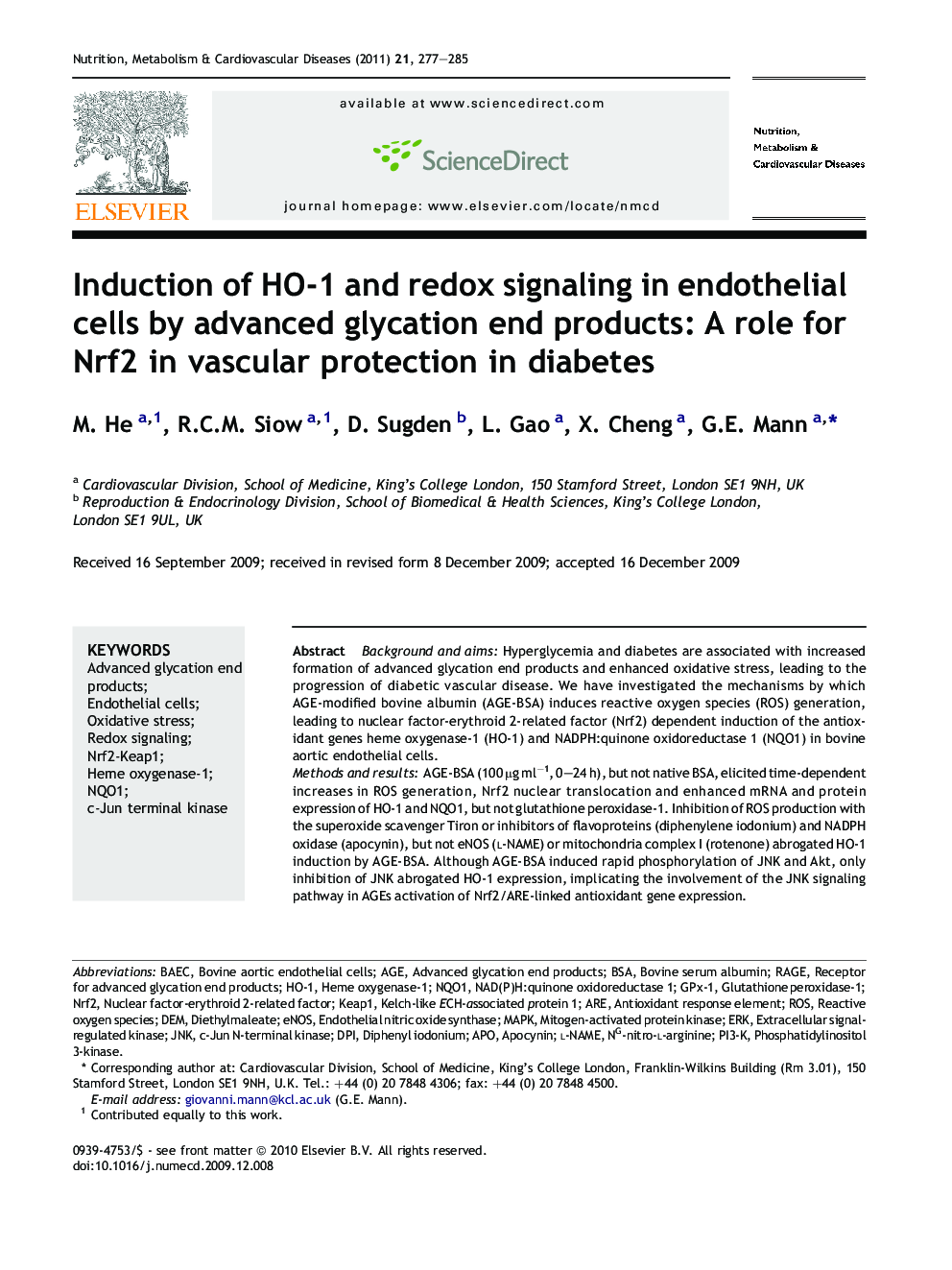| Article ID | Journal | Published Year | Pages | File Type |
|---|---|---|---|---|
| 3002400 | Nutrition, Metabolism and Cardiovascular Diseases | 2011 | 9 Pages |
Background and aimsHyperglycemia and diabetes are associated with increased formation of advanced glycation end products and enhanced oxidative stress, leading to the progression of diabetic vascular disease. We have investigated the mechanisms by which AGE-modified bovine albumin (AGE-BSA) induces reactive oxygen species (ROS) generation, leading to nuclear factor-erythroid 2-related factor (Nrf2) dependent induction of the antioxidant genes heme oxygenase-1 (HO-1) and NADPH:quinone oxidoreductase 1 (NQO1) in bovine aortic endothelial cells.Methods and resultsAGE-BSA (100 μg ml−1, 0–24 h), but not native BSA, elicited time-dependent increases in ROS generation, Nrf2 nuclear translocation and enhanced mRNA and protein expression of HO-1 and NQO1, but not glutathione peroxidase-1. Inhibition of ROS production with the superoxide scavenger Tiron or inhibitors of flavoproteins (diphenylene iodonium) and NADPH oxidase (apocynin), but not eNOS (l-NAME) or mitochondria complex I (rotenone) abrogated HO-1 induction by AGE-BSA. Although AGE-BSA induced rapid phosphorylation of JNK and Akt, only inhibition of JNK abrogated HO-1 expression, implicating the involvement of the JNK signaling pathway in AGEs activation of Nrf2/ARE-linked antioxidant gene expression.ConclusionOur findings establish that AGEs activate redox sensitive Nrf2-dependent antioxidant gene expression in bovine aortic endothelial cells, providing an adaptive endogenous defense against oxidative stress in diabetes.
